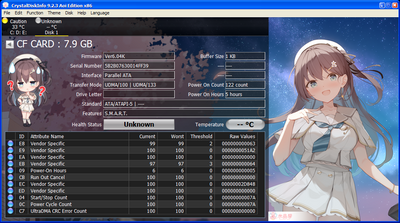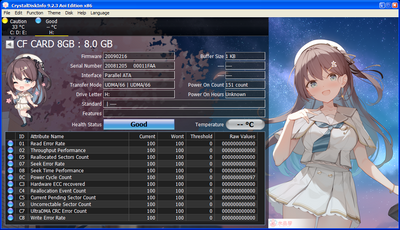Reply 40 of 61, by kingcake
- Rank
- Oldbie
Jo22 wrote on 2024-03-03, 08:36:Good point, taken. Thanks. […]
kingcake wrote on 2024-03-03, 02:32:Jo22 wrote on 2018-09-19, 06:10:No issues with CF cards so far.. I'm using quality CF-IDE adapters with voltage regulators and cheap ones (with diodes added manually).
Diodes are not the solution. The forward voltage drop of a diode changes with forward current. The Vf in the datasheet is only valid at the one testing current. If you go further down in the datasheet you will find the graph of forward voltage drop vs forward current.
So as the CF card current consumption varies the voltage will also be going up and down.
Good point, taken. Thanks.
I've checked the interwebs and it seems that certain CF cards are more vulnerable to power fluctuations.
In addition, Compact Flash cards for the consumer market are often based on battery-powered systems. Batterie- powered systems s […]
In addition, Compact Flash cards for the consumer market are often based on battery-powered systems. Batterie-
powered systems such as notebooks, digital cameras, etc. mean that abrupt voltage drops do generally not occur.
This is not the case with industrial applications without UPS.
At the same time, most CF cards perform active “wear leveling“ in order to distribute the memory wear evenly on the
card.
If a voltage drop occurs during critical write phases, faults up to total failures may occur on many Compact Flash
cards.
For this reason, great value is placed on the Power OFF ruggedness when selecting CF cards.https://cache.industry.siemens.com/dl/files/1 … lash_en-enu.pdf
By contrast, industrial cards seem to support various voltages.
Industrial CompactFlash (CF) cards are designed to operate in demanding and rugged environments. Key features that make them sui […]
Industrial CompactFlash (CF) cards are designed to operate in demanding and rugged environments. Key features that make them suitable for such conditions include:
1. **Temperature Range:** Industrial CF cards are built to withstand extreme temperature variations, both high and low, making them suitable for applications in harsh climates.
2. **Shock and Vibration Resistance:** These cards are engineered to resist shocks and vibrations commonly encountered in industrial settings, ensuring data integrity even in physically demanding environments.
3. **Durability:** Industrial CF cards are constructed with durable materials to withstand rough handling and challenging conditions, making them more robust compared to standard consumer-grade cards.
4. **Extended Lifecycle:** Industrial CF cards often have a longer lifecycle and are built with higher endurance to withstand frequent read/write cycles, making them suitable for continuous use in industrial applications.
5. **Error Correction:** Enhanced error correction mechanisms are implemented in industrial CF cards to ensure reliable data storage and prevent data corruption, especially in situations where the environment may introduce interference.
6. **Power Failure Protection:** Some industrial CF cards include power failure protection mechanisms to safeguard data during unexpected power outages, ensuring data integrity in critical applications.
7. **ECC (Error-Correcting Code):** Industrial CF cards commonly utilize advanced ECC algorithms to detect and correct errors, enhancing the overall reliability of data storage.
8. **Wide Operating Voltage Range:** To accommodate fluctuations in power supply, industrial CF cards often support a wide operating voltage range, ensuring stability even in situations where power levels may vary.
9. **Data Security:** Enhanced security features, such as write protection switches and secure erase functions, are often incorporated into industrial CF cards to prevent unauthorized access and protect sensitive data.
10. **Compliance with Industry Standards:** Industrial CF cards may comply with specific industry standards (e.g., MIL-STD-810G for military applications) to meet the requirements of various rugged environments.
These features collectively make industrial CF cards well-suited for applications where reliability, durability, and data integrity are critical, such as in aerospace, defense, industrial automation, and other harsh environments.
Source: https://www.quora.com/Do-industrial-CF-cards- … mer-grade-cards
I suppose it shouldn't hurt to attach a higher capacity electrolyte capacitor to the CF card adapter, to countermeasure short power sourges? Say, 470 µF?
Adding bulk capacitance can't really hurt anything. Just a standard electrolytic would be fine. No real need for low ESR in that scenario.
470uF is probably a little unnecessary given the current draw of a CF card. I'd probably bodge in something in the 22uF-120uF range. But if 470uF is what you already have then it shouldn't hurt.

